How to transplant cyclamen correctly?
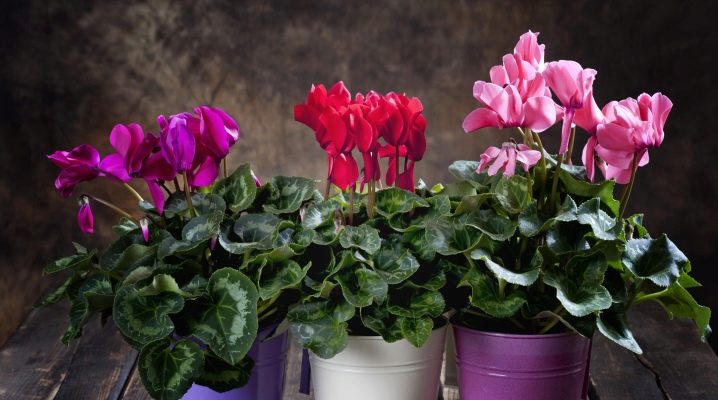
The blooming cyclamen bewitches our eyes with its original shape and bright color. This indoor flower, which is also called the alpine violet, makes almost every grower want to have it in their collection. The flower has a peculiarity - its flowering period falls on the winter months.
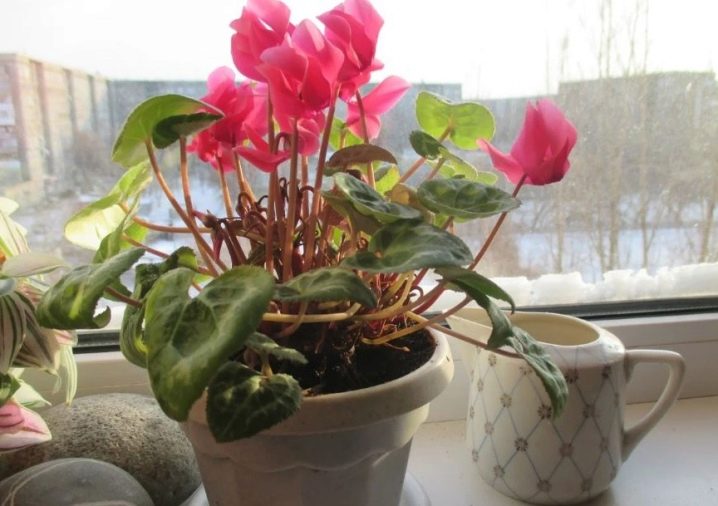
Cyclamen belongs to the Primroses family. The countries of the Mediterranean coast are considered the homeland of the flower; the plant is common in Iran, in Iraq. On the African continent, cyclamen grows in its northern and eastern territories, and on our mainland, the plant can be found on the Black Sea coast. In our country, wild cyclamens are listed in the nature conservation Red Book.
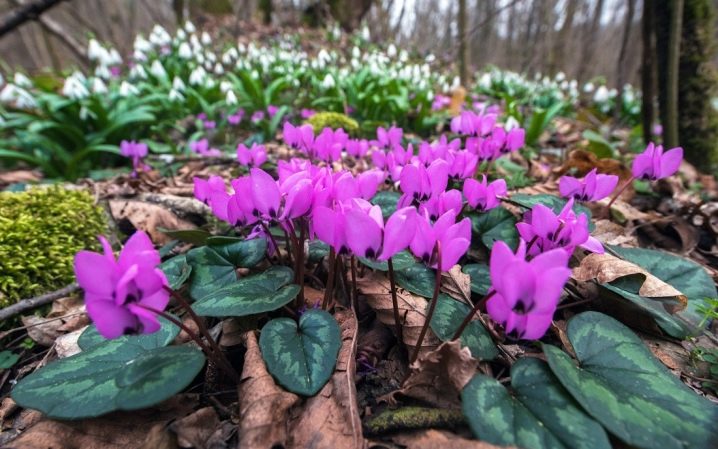
Peculiarities
The cyclamen has more than 20 varieties in its genus. Their differences lie in the fact that each species has its own color or differs from its counterpart in the structure of the flower - there are even flowers of a double structure. In addition, the size of the flower also varies depending on the type of plant: this exotic handsome man grows in height from 15 to 30-35 centimeters.
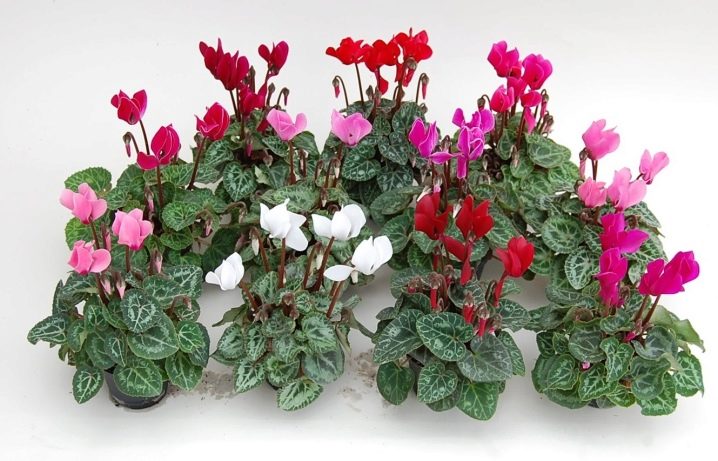
Cyclamen is a perennial, all of its modern varietal hybrids were obtained from Persian and European cyclamens. It is these types that experts recommend for home breeding.
Persian cyclamen with proper care can grow up to 30 cm in height. Outwardly, it is very attractive, it has dark green leaves with a light green edging, and large flowers have rich pink hues.
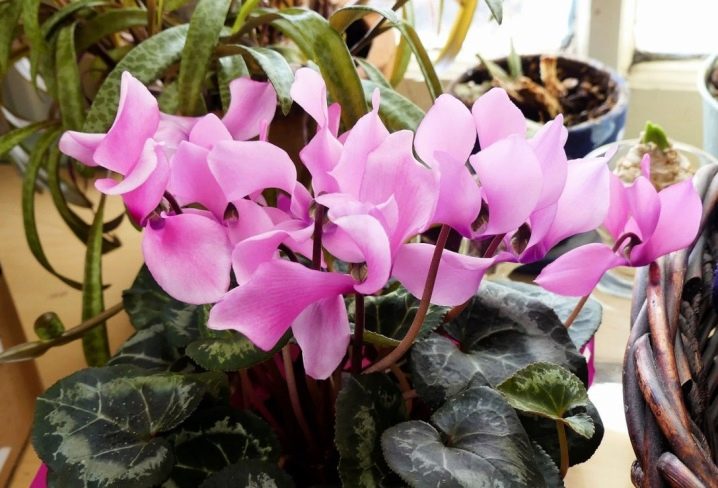
European cyclamen also has dark green leaves, but the pattern on them is not as contrasting as in the Persian species. The flowers of the European variety are inferior in size, but they are much brighter in color. The European cyclamen has a peculiarity - it does not have a winter resting phase, which means that it will be much easier to care for it.
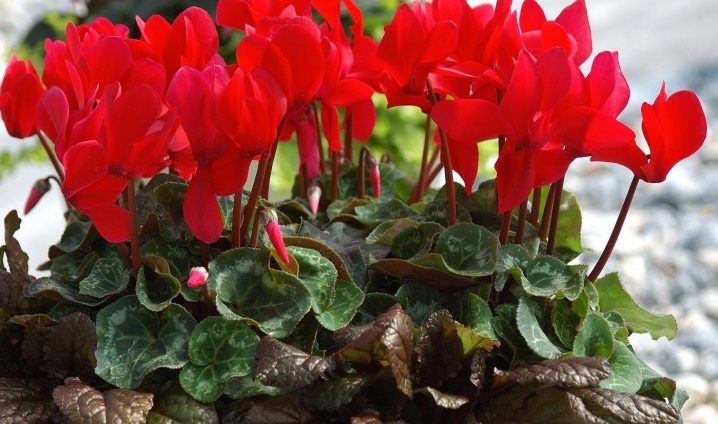
The root system of cyclamen is tuberous, dormant buds are located on it, from which leaves sprout, gathering in a root rosette. In the center of the tuber there are points of growth of future peduncles. Growing up, these peduncles rise above the foliage. Flowers on peduncles grow with a downward slope, and their petals are bent upward. Each flower has both a pistil and a stamen, that is, it is a hermaphrodite.
The annual life cycle of a plant is peculiar and proceeds in three conditional phases. The flower grows in the autumn months, blooms in winter, and the plant is in a state of rest in spring and summer.
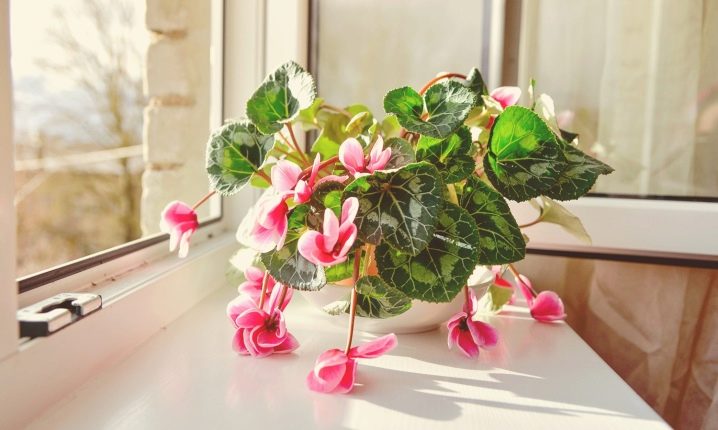
Transplant rules
Cyclamens are sold in winter, during flowering, while the soil is abundantly flavored with fertilizer granules. Such an excess of feeding has a bad effect on the well-being of the plant, and after buying the cyclamen in your house may wilt. In nurseries, the flower was kept in greenhouse conditions, where there was good illumination, air humidity and food. A lot of time has passed since the flower was transported to the store and then to your home, which adversely affected the cyclamen. He may shed the buds or his leaves will begin to turn yellow.
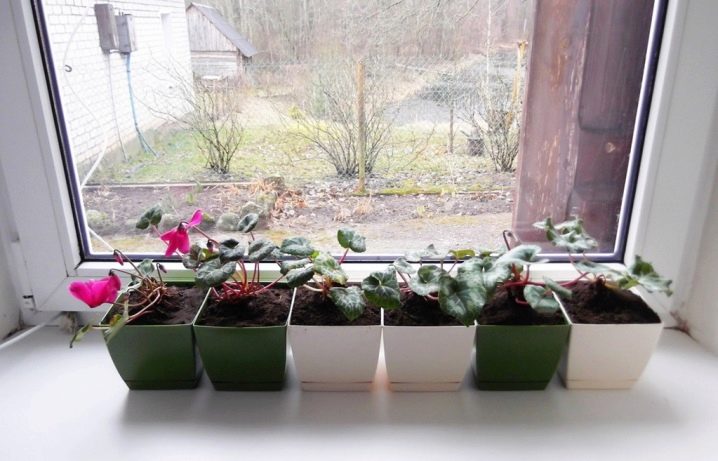
However, do not rush to transplant a flowering cyclamen - it is better to watch it, watering it with small portions of warm settled water. Transplanting a flowering plant will only increase its stress state and can completely destroy your green pet. Wait until the flowering ends.
Experienced growers believe that it is best to start replanting a purchased plant into a new pot when it comes out of dormancy.
Before planting a store-bought plant in its permanent habitat, pay attention to the back of its leaf plates and check for accumulations of insect pests. This should be done in order to quickly take measures to treat the flower and in order not to infect your other house plants.
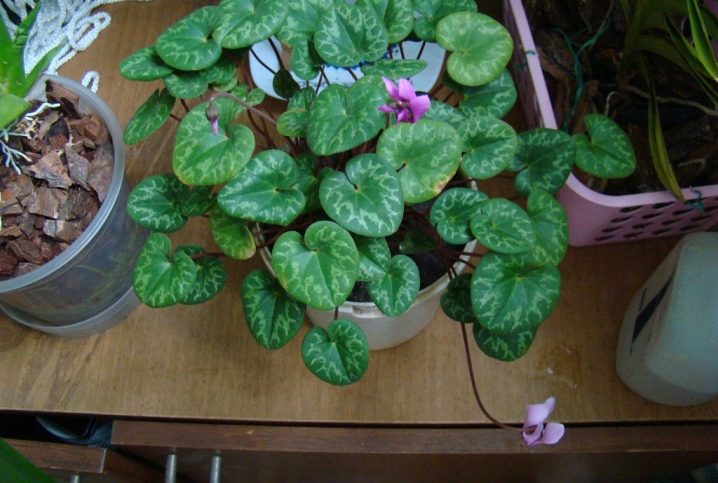
What is necessary?
To transplant a purchased plant into another pot, you should prepare everything you need in advance.
- Landing capacity. You can choose a pot made of plastic or ceramic, as long as it is not too large and has a good drainage hole. Cyclamen loves a tight container, so we choose a new pot 2-4 centimeters larger than the previous one. The new pot must have a tray to collect excess moisture.
- Soil for planting. You can use any soil that is intended for decorative flowering plants. Cyclamen loves when the soil is loose and rich in organic matter. For a plant, choose slightly acidic soils, the optimal acidity is 5.0-6.5 pH.
- Baking powder for soil. It is necessary to add loosening components to the soil. To do this, you can take vermiculite, coarse river sand, coconut fiber, chopped pine bark.
- Drainage material. Fine expanded clay and gravel are used as drainage.
- Fertilizers. After transplanting, the cyclamen can not be fertilized for 1-2 months, since it will take useful trace elements from the soil. After this time, you need to stock up on fertilizer. It can be a liquid fertilizer for decorative flowering plants of the FORTE trademark, the drug Cyclamen, Agricola.
- Remedies. Cyclamen is a poisonous plant and precautions must be taken when working with it. To perform a flower transplant, you will need a pair of rubber gloves.
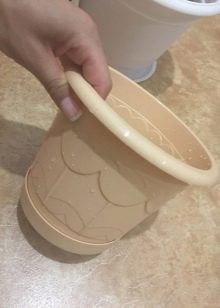
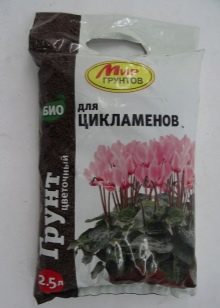
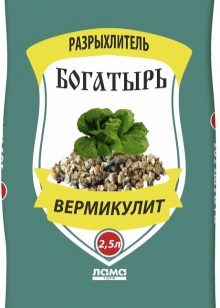
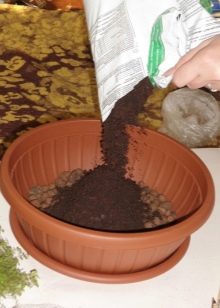
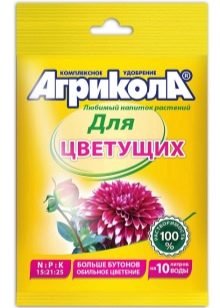
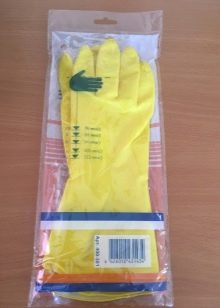
Step-by-step instruction
So, you decided to transplant the purchased cyclamen at home, your procedure will include several consecutive steps.
- After the end of flowering, the plant must be carefully removed from the shipping pot, and then carefully cleaned its root system from the old soil. You can separate the lumps of earth with roots with a wooden toothpick. However, when cleaning, do not touch the earthen ball under the tuber, as the cyclamen does not like this.
- Preparing a pot for planting. If you chose a plastic pot, then before planting a flower in it, wash the inner walls of the pot with soap and pour boiling water over them. If your pot is made of clay, then it must be immersed for 1-2 hours in a deep container with water - so air will come out of the pores of the clay container. This procedure is done so that the pot after planting the plant does not draw into itself the moisture that is intended for the flower.
- We create a drainage system correctly. We spread 2-3 centimeters of expanded clay or fine gravel at the bottom of the pot. It is good to add a small amount of charcoal to the drainage layer, only 2-3 pieces are enough.
- We put a layer of earth 4-5 centimeters on the drainage and place the plant. Then we fill up the earth on the sides and press it lightly. When planting, do not over-deepen the tuber itself and the root rosette of leaves.
- After you have transplanted the cyclamen, water the flower. This should be done in moderation, since cyclamens equally poorly tolerate both overdrying of the soil and its waterlogging. An adult plant is best watered from a pan.
- You should think in advance about the place to place the flower. Since cyclamen feels best in cool and diffused sunlight, the best place for it may be the east or west direction of the window.
If you are lucky enough to purchase a large specimen of cyclamen with children on the main tuber, you can separate them when transplanting, forming new plants and planting them in separate containers.

Possible problems
Growing cyclamen is a difficult task, and in order to cope with it, you need to follow all the rules for caring for a flower. A common problem with cyclamens is yellowing of the foliage. This process can be called normal if you got yourself a species that sheds foliage during a dormant period. But if your green pet does not belong to the species of deciduous cyclamen and its leaves have drooped, you need to determine the cause of this condition and eliminate it.
The yellowing of foliage in cyclamen can occur for the following reasons.
- The plant has outgrown the volume of its pot, the root system has overgrown.
- The flower is exposed to direct sunlight, causing it to burn.
- The plant is not provided with regular watering or it is in a room with dry air. To solve the problem, it is necessary to prevent the topsoil from drying out. In dry air, you can put a flower pot on a pallet with wet expanded clay or use an electric humidifier next to the plant.
- If a flower withers during the flowering period, this indicates that it does not have enough feeding. It is necessary to introduce liquid fertilizers for decorative flowering plants when watering.
To prevent your flower from withering completely, try to establish the cause of its illness as soon as possible and eliminate it by establishing comfortable conditions for the plant.
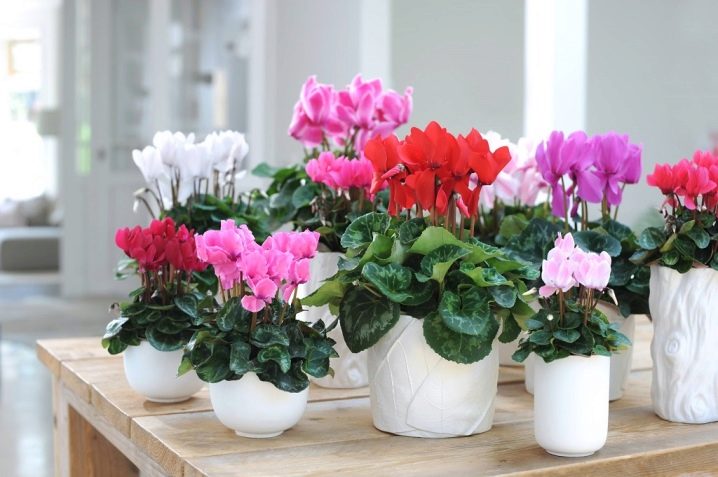
It is possible that the cause of the flower's disease was a bacterial or fungal infection. The symptomatology in these cases is quite obvious.
- Gray rot - the leaves turn yellow, the stems and peduncles are covered with a fluffy gray bloom of mold. This situation occurs when the humidity is high and the temperature near the flower is low. To cure the flower, you will need to remove all affected areas and treat it with Fundazole solution.
- Wet rot - the cyclamen bush begins to wither quickly, and at the same time, an unpleasant smell of decay can be found near it. The damaged areas must be removed and the cyclamen treated with any fungicide solution. If the process has already captured the root bulb, then it will most likely be impossible to save the flower.
- Fusarium - the plant begins to turn yellow. The cause is a fungal infection. The fungus infects the tissues of the stems and peduncles, clogging the capillary conducting system, which is why decay occurs. In addition, the spores of the fungus enter the soil, where they expect favorable conditions for a long time. To combat fusarium, the damaged parts of the plant are removed, the soil is changed and watered with "Fundazol", and the ground part is treated with "Topsin".
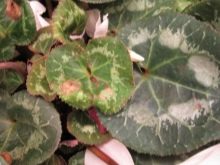
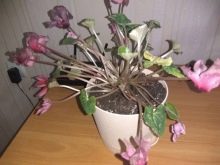

It happens that the cyclamen is damaged by pests. If they are affected, the following symptoms will appear.
- Cyclamen mite. The diseased plant stops blooming, the leaves and peduncles are deformed. For treatment, a series of spraying of the flower with insecticides is used. Experienced cyclamen breeders claim that this type of tick is very resistant to insecticides, and it is extremely rare to cure the plant. If there are still cyclamens in your collection, then the diseased specimen is best destroyed in order to protect healthy specimens from infection.
- Thrips Are small insects whose larvae feed on the sap of leaves and young shoots. Visually, you will notice a lot of white dots on the leaf plates, while the edges of the leaves will be dried out and twisted inward. If you look closely, you will see a cluster of small insects on the back of the leaf. To combat them, use drugs "Fitoverm" or "Aktara".
- Shield - one of the most dangerous pests for cyclamen. They are practically not affected by insecticidal preparations, and the symptoms of infection appear too late.A diseased plant has a cluster of small brown insects on the back of the leaf, which are protected from the outside by a special shell, which gives them resistance when exposed to insecticides. The most effective method of getting rid of the scale insect is to manually collect insects from a flower. For the process to be effective, you need to spray the plant with an alcohol solution before harvesting.
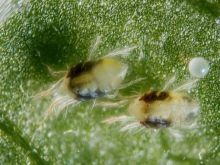

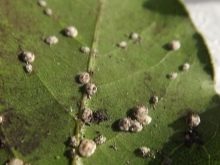
The plant can be infested with pests in the nursery from other diseased plants. Therefore, when choosing a flower when buying, carefully examine it for the presence of pests.
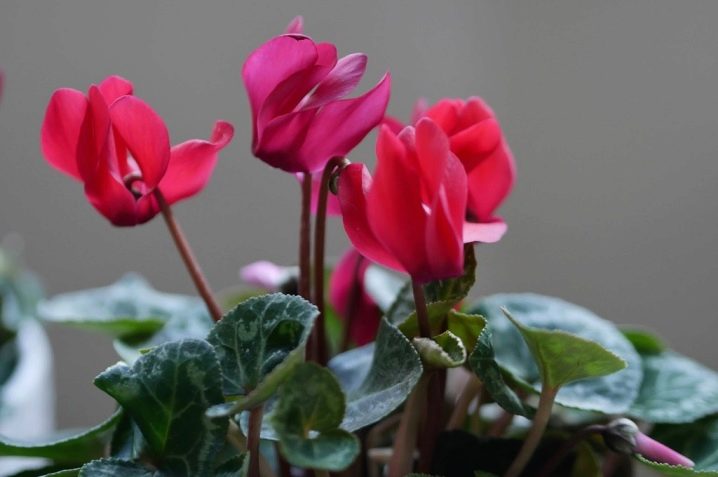
For a cyclamen transplant, see the video below.







































































































The comment was sent successfully.